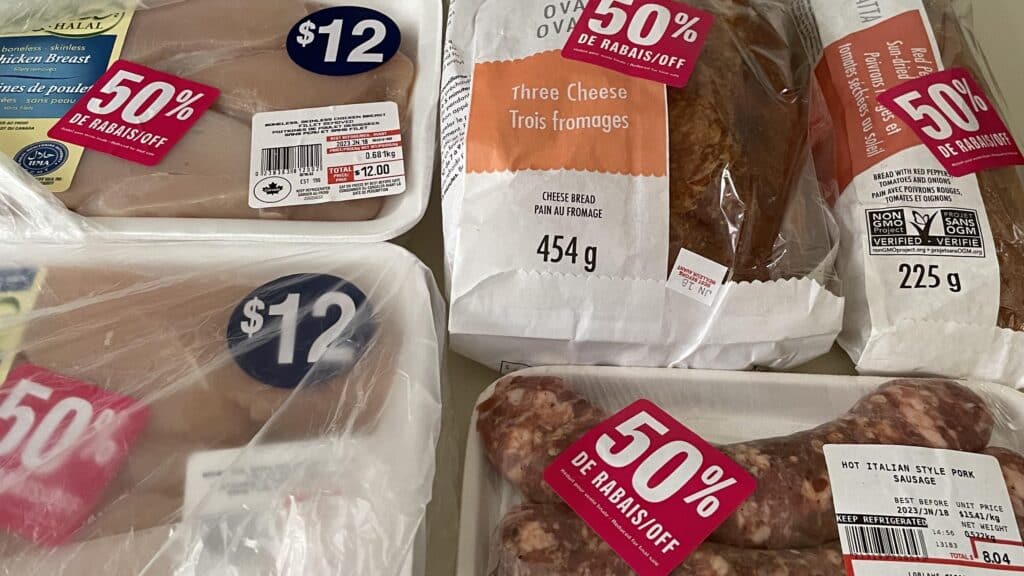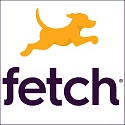(Update: On Friday, January 19th, Loblaws reversed course and said its half-off discounts would return. “Customers can expect to see 50% stickers returning in the next few weeks,” a spokesperson confirmed.)
With grocery prices higher than they used to be, one way to save money is by seeking out fresh foods that are close to their expiration dates – many grocery stores will heavily discount them so they don’t go to waste.
But one grocery chain is coming under fire for raising prices on even expiring products that are one step away from the trash can. They’re calling their new pricing structure “more predictable and consistent,” but many shoppers are calling it “greed.”
It’s all happening up north, at Canada’s largest grocery chain, Loblaws. Until this week, its stores had regularly put 50% off stickers on meat and produce items that it advised shoppers to “serve tonight” before they went bad. Now, those stickers offer 30% off instead.
Do the math, and a 20% lesser discount is equivalent to a 40% price hike.
And discount-seeking Canadians aren’t happy. “I guess Loblaws smarty-pantses know what they’re doing, but they just took away one of the bigger reasons I shopped there,” a Reddit user wrote. “Now we only get 30% off expiring food because Loblaws would rather feed the dumpsters than sell food half priced,” a shopper wrote on X. “You’d rather throw food out then maintaining affordable food cost for those who depend heavily on these reductions?” another shopper asked. “Maybe we won’t buy it for a month or 2 & then they will be left with their EXPIRED FOOD to throw out at NO PROFIT,” another suggested.
Loblows made no public announcement about the coming change and only acknowledged it when shoppers began asking questions after seeing the new price stickers. “We’ve always offered a range on these types of items from 30-50%, and are now moving toward a more predictable and consistent offering, including more consistency with our competitors,” the retailer offered by way of explanation.
Canadian food industry expert Sylvain Charlebois, director of Dalhousie University’s Agri-Food Analytical Laboratory, called that rationale “perplexing.” In an opinion piece for the Toronto Sun, he wondered why Canada’s leading grocer, which controls a third of the market, is following competitors by matching their lower discounts, instead of leading the way. “In a free market,” Charlebois wrote, “the focus should be on finding innovative ways to remain competitive rather than simply mirroring the competition.”
In a subsequent interview with CTV News, he called the move “a missed opportunity for the number one grocer in our country to read the room.” Shoppers, he said, “are under tremendous financial pressure. They’re receiving bills from the holidays right now. The mortgage payments are likely due, and increasing, probably. When they shop at the grocery store, prices aren’t dropping. And so they need all the help they can get.”
At least one lawmaker wants government regulators to look into the decision to offer lower discounts. Member of Parliament Alistair McGregor has written to the country’s Competition Bureau, drawing attention to what he called “a concerning aspect highlighted in Loblaw’s statement, indicating that this shift in pricing strategy is in alignment with other major grocery retailers.” He said this “raises suspicions of possible collusion or anti-competitive business practices within the Canadian grocery retail sector.”
That may be true if grocers all got together and agreed to offer the same discounts. In this case, the move appears to be Loblaws’ decision to mirror its competitors’ pricing practices, which is not quite the same thing.
Nevertheless, the move is not being received well. But Loblaws insists there are still savings to be had. “We continue to offer a range of discounts via in-store promotions and flyers,” the retailer said in a statement, “as well as deep discounts on food nearing expiration through the Flashfood app.”
Flashfood, which works with some 1,600 grocery stores across the U.S. and Canada, allows app users to browse soon-to-expire products at nearby stores, pay for them through the app, then pick them up at the store. Those discounts will remain 50%, or better, Loblaws points out.
Charlebois, for one, is unimpressed. “Instead of looking at a product, physically looking at it, you have to look at a picture, pay for that product, and then go to the grocery store and pick up what you just bought,” he told CTV about the app. “You want to see them first, and that’s the advantage that Loblaws is taking away from their customers.”
So if you rely on cut-priced groceries to help cut costs, keep an eye on the discount tags at your local store. If other stores decide to raise their prices by lowering their discounts, those bargain-priced products may not turn out to be as big a bargain as they used to be.
Image source: Twitter/FoodProfessor

















Sadly, this story is true. My local chain supermarket has a display for their day old baked goods, and I picked up a package of 6 bagels, and put them right back, as it was over $4 for bagels going stale. Breads were in the $3-$5 range reduced. I put them back down. I eat very little bakery, and found a local mom & pop grocery store, and their day old baked goods were very reasonably priced, got a small loaf of home made bread for 75 cents! Sold! The larger chains might reduce the price, but not 50%.